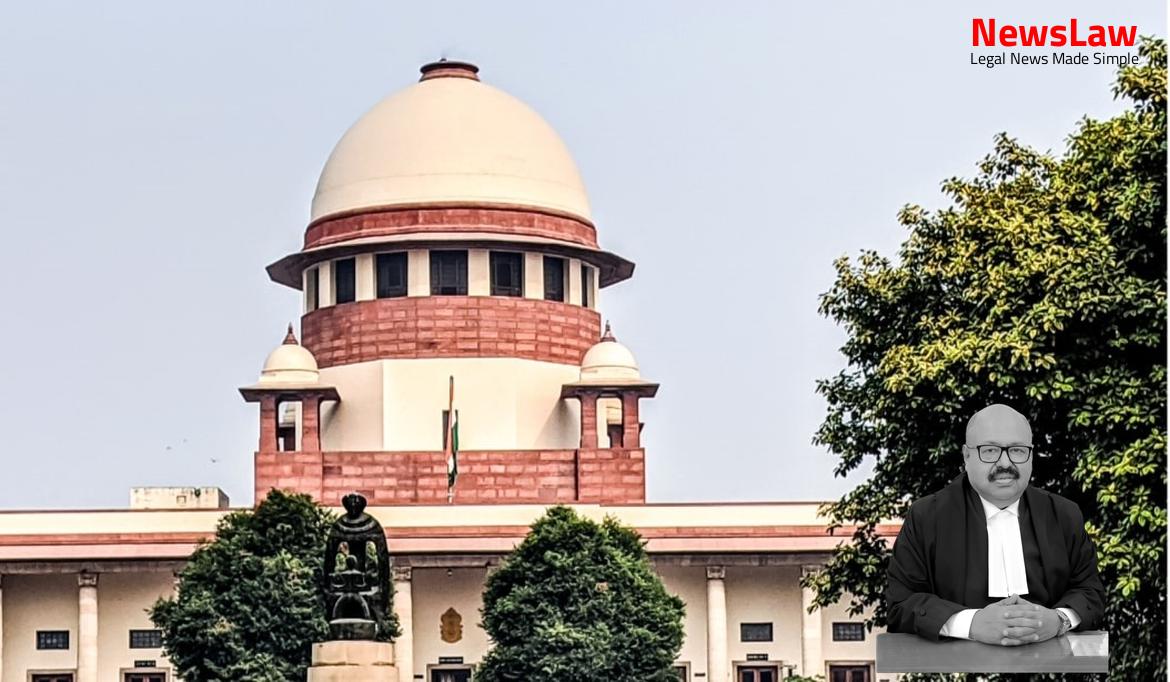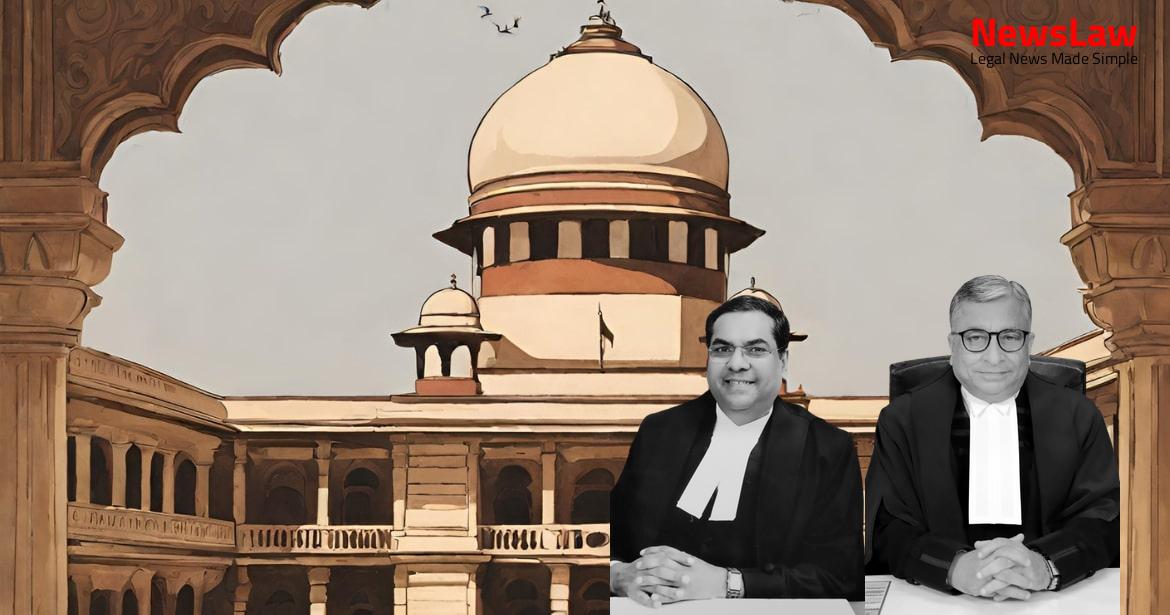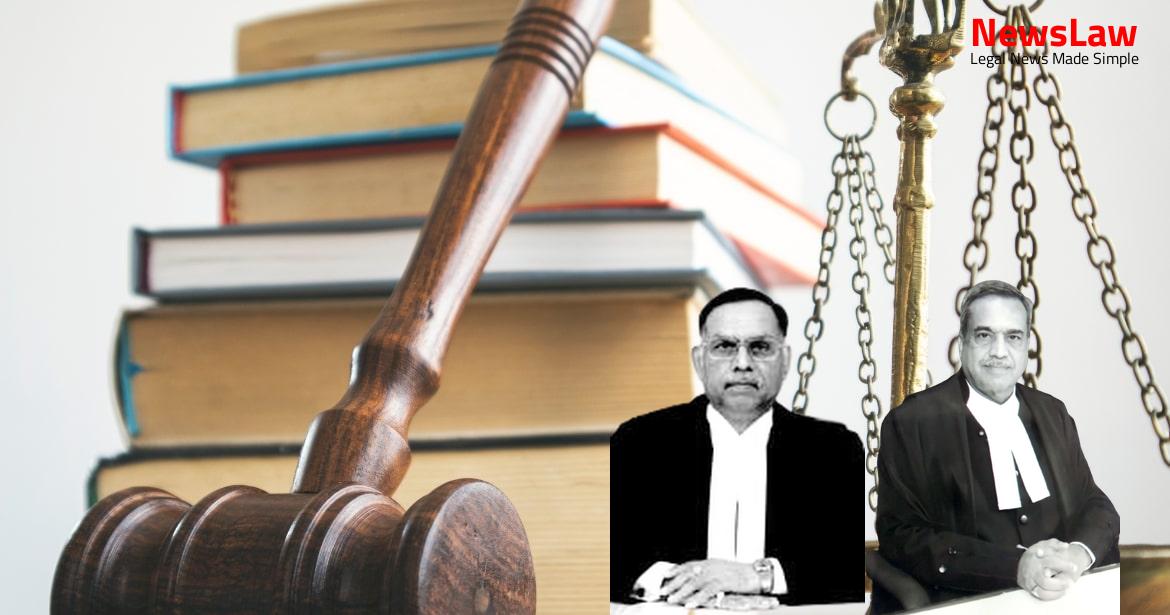Explore the importance of evidence quality over quantity in judicial decisions through a compelling legal case analysis. The court’s emphasis on establishing a complete chain of circumstantial evidence to prove guilt highlights the critical role of the legal system in ensuring justice. This case underscores the significance of thorough analysis and evaluation of evidence in criminal proceedings, showcasing how the court prioritizes the quality of evidence to determine the outcome of the case.
Facts
- The appellant’s sister was found dead in her matrimonial home, with the father of the appellant stating she died of a snakebite.
- The in-laws initially responded that they will see for a few days before deciding whether the deceased could live with them.
- A marg intimation was lodged by the deceased’s brother, alleging that she had died at her in-laws’ home.
- Prior incident mentioned where the deceased had returned to her maternal home due to harassment by her in-laws.
- Accusations of harassment by in-laws due to interactions with the appellant’s brother’s wife.
- Charges framed against the appellant and his parents in Sessions Trial No.165/1999.
- Postmortem report indicated death by strangulation, possibly a homicidal nature.
- Reconciliation effort made when deceased was brought back to matrimonial home by her brothers.
- Accused claimed they were in the fields when the deceased was found dead in her cot.
- Father-in-law of the deceased passed away during the pendency of the appeal.
- High Court concluded there was no legally admissible evidence to convict the mother-in-law of the deceased, hence she was acquitted.
- Trial Court found Lalchand sent his wife and the appellant to the fields after the murder, pretending to be shocked upon return.
- Circumstantial evidence formed the basis of conviction by establishing a complete chain to prove guilt.
- Sessions Court found all three accused guilty under Section 302 of IPC based on cause of death as asphyxia due to strangulation.
- High Court upheld the appellant’s conviction, relying on the doctor’s testimony that the death was a result of strangulation.
- Prosecution faced challenges in leading direct evidence to prove the guilt of the accused due to the incident taking place inside the house.
- Postmortem report detailed injuries on the deceased consistent with homicidal death, ruling out suicide theory.
- Various circumstances like the deceased’s visit to maternal home and statements about ill-treatment by in-laws were examined to establish guilt.
Also Read: Supreme Court Judgment on Single Till Mechanism for HRAB Calculation: A Comprehensive Analysis
Arguments
- The learned counsel for the appellant argued that the circumstantial evidence was inconclusive and the chain of evidence was incomplete.
- Previous allegations of cruelty were not proven as there was no prior complaint lodged by the deceased or her relatives.
- The testimony of PW-1 was discredited as he is the stepbrother and not the real brother of the deceased.
- Statements of witnesses were not recorded promptly after the incident and important evidence like the site plan was not proved.
- No clear intention or motive was attributed to the appellant to kill the deceased.
- Dr. Bachkar’s testimony was criticized for not forming a firm opinion on the nature of death and discrepancies regarding the marks on the neck.
- No recovery of the alleged weapon or necklace was made from the appellant.
- Comparison was drawn with the acquittal of the appellant’s mother based on the same evidence.
- Dispute over the actual time spent in jail by the appellant was raised.
- The absence of explanation by the appellant regarding the cause of death was highlighted by the counsel for the respondent State.
- Reliance was placed on previous judgments where convictions were supported by dying declarations and recovery of the weapon of offense.
- The counsel argued that the number of witnesses should not be the sole basis for conviction and highlighted the consistency of PW-1’s testimony to convict the appellant.
Analysis
- The case primarily relied on the testimony of PW-1 and medical evidence.
- The High Court concluded that the location of the house made it improbable for an outsider to commit the crime without causing disturbance.
- Emphasis was placed on the quality of evidence over the quantity of witnesses.
- The inconsistent mention of snakebite by PW-1 did not invalidate the rest of his testimony.
- The reason for witnesses turning hostile was attributed to family relationships and influence.
- Significant improvement was noted in PW-1’s statement regarding Lalchand’s explanation of the cause of death.
- The prosecution is responsible for proving its case beyond a reasonable doubt.
- The quality of evidence, not the quantity of witnesses, is crucial in determining guilt.
- Indian legal system does not require a plurality of witnesses for conviction.
- Reference to the case of Namdeo v. State of Maharashtra emphasizing the importance of evidence quality over quantity.
- Quoting Yanob Sheikh Alias Gagu v. State of West Bengal on the absence of a specific number of witnesses required for a conviction.
- Highlighting Section 106 of the Evidence Act, placing the burden of proving a fact that is within a person’s knowledge on that individual.
- Family members were in the home before the crime, indicating the husband’s presence.
- No explanation given for the wife’s injuries, suggesting the husband’s responsibility.
- The husband’s failure to provide a plausible explanation for the death in the statement under Section 313 of Cr.P.C.
- Mere denial by the appellant is insufficient in such a serious situation.
- Decision: No interference with the impugned judgment due to strong circumstances indicating the husband’s involvement in the wife’s death by strangulation.
Also Read: Selection and Appointment of Judicial Officers in Himachal Pradesh
Decision
- The appellant’s case should be examined to determine if he has completed 14 years of actual sentence.
- If 14 years have been completed, the case should be reviewed for possible release within two months.
- The appeal has been dismissed, with each party bearing its own costs.
Case Title: JAYANTILAL VERMA Vs. STATE OF M.P. (NOW CHHATTISGARH) (2020 INSC 649)
Case Number: Crl.A. No.-000590-000590 / 2015



